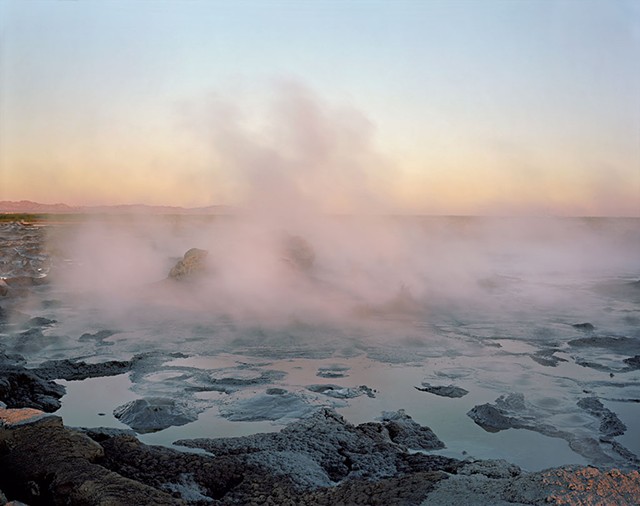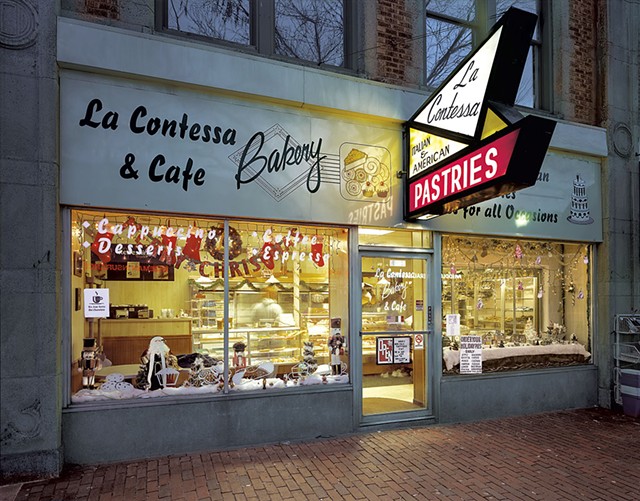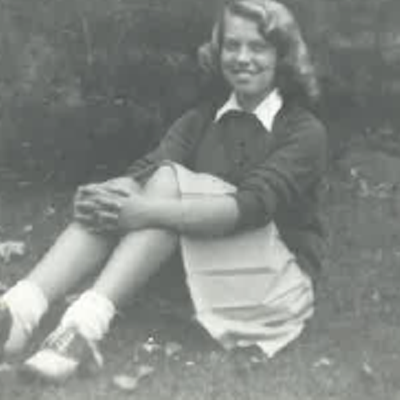
- Courtesy
- "Geothermal hot springs on the geologically unstable San Andreas Fault, exposed by receding seawater" by Virginia Beahan
Geography is a function of time as much as location. Even static-seeming places such as deserts or small towns are constantly in flux. How to depict that change, and in doing so convey the forces behind it, is the question that photographers Virginia Beahan and Jim Dow explore in "American Geography," on view at BigTown Gallery in Rochester.
The landscapes Beahan pictures in the show's selections from her "Desert Sea" series are, as the name suggests, huge and empty but full of tension. She took many of her photos in California, in the Colorado Desert surrounding the Salton Sea. Created in 1905 as a by-product of attempts to irrigate the area, the salt lake is shallow, landlocked and filled with agricultural runoff. In the 1950s and '60s, it hosted a resort community; since then, the lake has been shrinking, becoming more and more toxic. Poison dust from the lake bed contaminates the whole area.
This complex history offers Beahan many avenues to examine. The desert itself, with its horizon and palpable sense of punishing heat, dominates and unifies the images.
Her long titles signal their relevance. "Sculptor's rendering of a saguaro cactus, a variety that doesn't grow in this area" centers a rust-colored fake cactus amid the desert's natural beauty. Mountains glow in the distance and less iconic vegetation occupies the foreground. It's a physical record of an approach to nature: Someone tried to stamp their simplified idea of what the desert should be onto the desert that is.
Other photos nod to the mystique that draws people west. This is an outcast place, where outcast people find what they're looking for, despite the harsh environment. "Salvation Mountain, a 27-year-old project by religious convert Leonard Knight / now a popular attraction for pilgrims, artists, and passing tourists" pictures exactly that. The late Shelburne native Knight went to California in the 1960s and eventually built his massive folk-art construction from adobe, cement and thousands of coats of paint. In Beahan's image, it seems almost natural — as if the desert is growing into the brightly colored architecture.

- Courtesy
- "Front of 'La Contessa Bakery & Cafe' decorated for Christmas" by Jim Dow
Dow's photos echo some of Beahan's. "Praying Hands atop Dirt Mound," for instance, shows a sculptural pair of hands no doubt inspired by a similar religious fervor to Salvation Mountain, but Dow's images land differently. Most feature some kind of sign: some neon, some sculptural, many with rusting armatures or peeling paint. Dow takes many of his photos on Route 11, which winds from Rouses Point, on the New York side of Lake Champlain, all the way to New Orleans.
Dow's subjects have the nostalgic patina of artifacts from disappearing rural towns. But they add an element of hope by picturing the ingenuity and creativity found in those places. "Sign for the Spindletop Motel" shows what looks like a radio tower, wires and vines signaling more of a utilitarian structure than an advertisement. Below it on the wall, "The Tin Can Pile from SW" shows a similarly shaped edifice, but this one is a massive pile of tin cans held in place by a dangerously tilted metal exoskeleton, like a roadside Leaning Tower of Pisa.
The show is part of BigTown's current multiyear project presenting photography that examines how the past, present and future of the medium can reflect a changing world. The photos in "American Geography" fit right in the middle — glancing in the rearview while watching the road ahead.









Comments
Comments are closed.
From 2014-2020, Seven Days allowed readers to comment on all stories posted on our website. While we've appreciated the suggestions and insights, right now Seven Days is prioritizing our core mission — producing high-quality, responsible local journalism — over moderating online debates between readers.
To criticize, correct or praise our reporting, please send us a letter to the editor or send us a tip. We’ll check it out and report the results.
Online comments may return when we have better tech tools for managing them. Thanks for reading.